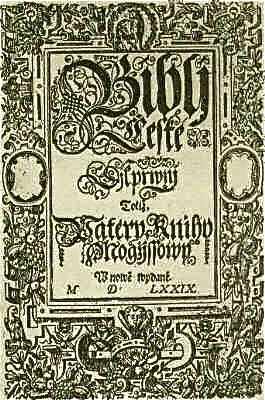|
ńĆaslav (name)
ńĆaslav is a Slavic given name, which has several spelling variants: ńĆaslav (Cyrillic: –ß–į—Ā–Ľ–į–≤) in Serbian, ńĆ√°slav or ńĆ√©slav in Czech, and CzasŇāaw or CzesŇāaw in Polish. In medieval Greek texts, the name is spelled as ő§ő∂őĪŌÉőłőĽő¨ő≤őŅŌā. The name consists of two elements, ''ńća'' and ''slav''. The element ''ńća'' is a Slavic root meaning "to await" or "to look forward to", expressing the idea that the child is an eagerly awaited gift. The element ''slav'' is very common in Slavic anthroponyms. It comes from ''slava'' "glory", and has the sense of "good name" in the given names. Notable people named ńĆaslav: * ńĆaslav Klonimirovińá, ruler of Serbia (927‚Äď960) * ńĆaslav ńźorńĎevińá, Serbian writer See also *CzesŇāaw CzesŇāaw, ( cz, ńĆeslav, be, italic=yes, ńĆasŇāaŇ≠; ńĆesŇāaŇ≠, lt, ńĆeslovas) is an old given name derived from the Slavic elements ''ńća'' (to await) and ''slava'' (glory). Feminine form: CzesŇāawa/ńĆeslava. The name may refer to: * Ceslaus, ... * ... [...More Info...] [...Related Items...] OR: [Wikipedia] [Google] [Baidu] |
Slavic Languages
The Slavic languages, also known as the Slavonic languages, are Indo-European languages spoken primarily by the Slavic peoples and their descendants. They are thought to descend from a proto-language called Proto-Slavic, spoken during the Early Middle Ages, which in turn is thought to have descended from the earlier Proto-Balto-Slavic language, linking the Slavic languages to the Baltic languages in a Balto-Slavic group within the Indo-European family. The Slavic languages are conventionally (that is, also on the basis of extralinguistic features) divided into three subgroups: East, South, and West, which together constitute more than 20 languages. Of these, 10 have at least one million speakers and official status as the national languages of the countries in which they are predominantly spoken: Russian, Belarusian and Ukrainian (of the East group), Polish, Czech and Slovak (of the West group) and Bulgarian and Macedonian (eastern dialects of the South group), and Serbo-C ... [...More Info...] [...Related Items...] OR: [Wikipedia] [Google] [Baidu] |
Slavs
Slavs are the largest European ethnolinguistic group. They speak the various Slavic languages, belonging to the larger Balto-Slavic branch of the Indo-European languages. Slavs are geographically distributed throughout northern Eurasia, mainly inhabiting Central and Eastern Europe, and the Balkans to the west; and Siberia to the east. A large Slavic minority is also scattered across the Baltic states and Central Asia, while a substantial Slavic diaspora is found throughout the Americas, as a result of immigration. Present-day Slavs are classified into East Slavs (chiefly Belarusians, Russians, Rusyns, and Ukrainians), West Slavs (chiefly Czechs, Kashubians, Poles, Slovaks and Sorbs) and South Slavs (chiefly Bosniaks, Bulgarians, Croats, Macedonians, Montenegrins, Serbs and Slovenes). The vast majority of Slavs are traditionally Christians. However, modern Slavic nations and ethnic groups are considerably diverse both genetically and culturally, and relations between them ‚ ... [...More Info...] [...Related Items...] OR: [Wikipedia] [Google] [Baidu] |
Cyrillic
, bg, –ļ–ł—Ä–ł–Ľ–ł—Ü–į , mk, –ļ–ł—Ä–ł–Ľ–ł—Ü–į , russian: –ļ–ł—Ä–ł–Ľ–Ľ–ł—Ü–į , sr, —õ–ł—Ä–ł–Ľ–ł—Ü–į, uk, –ļ–ł—Ä–ł–Ľ–ł—Ü—Ź , fam1 = Egyptian hieroglyphs , fam2 = Proto-Sinaitic , fam3 = Phoenician , fam4 = Greek script augmented by Glagolitic , sisters = , children = Old Permic script , unicode = , iso15924 = Cyrl , iso15924 note = Cyrs (Old Church Slavonic variant) , sample = Romanian Traditional Cyrillic - Lord's Prayer text.png , caption = 1780s Romanian text (Lord's Prayer), written with the Cyrillic script The Cyrillic script ( ), Slavonic script or the Slavic script, is a writing system used for various languages across Eurasia. It is the designated national script in various Slavic, Turkic, Mongolic, Uralic, Caucasian and Iranic-speaking countries in Southeastern Europe, Eastern Europe, the Caucasus, Central Asia, North Asia, and East Asia. , around 250 million people in Eurasia use Cyrillic a ... [...More Info...] [...Related Items...] OR: [Wikipedia] [Google] [Baidu] |
Serbian Language
Serbian (, ) is the standardized variety of the Serbo-Croatian language mainly used by Serbs. It is the official and national language of Serbia, one of the three official languages of Bosnia and Herzegovina and co-official in Montenegro and Kosovo. It is a recognized minority language in Croatia, North Macedonia, Romania, Hungary, Slovakia, and the Czech Republic. Standard Serbian is based on the most widespread dialect of Serbo-Croatian, Shtokavian (more specifically on the dialects of ҆umadija-Vojvodina and Eastern Herzegovina), which is also the basis of standard Croatian, Bosnian, and Montenegrin varieties and therefore the Declaration on the Common Language of Croats, Bosniaks, Serbs, and Montenegrins was issued in 2017. The other dialect spoken by Serbs is Torlakian in southeastern Serbia, which is transitional to Macedonian and Bulgarian. Serbian is practically the only European standard language whose speakers are fully functionally digraphic, using both Cyril ... [...More Info...] [...Related Items...] OR: [Wikipedia] [Google] [Baidu] |
Czech Language
Czech (; Czech ), historically also Bohemian (; ''lingua Bohemica'' in Latin), is a West Slavic language of the Czech‚ÄďSlovak group, written in Latin script. Spoken by over 10 million people, it serves as the official language of the Czech Republic. Czech is closely related to Slovak, to the point of high mutual intelligibility, as well as to Polish to a lesser degree. Czech is a fusional language with a rich system of morphology and relatively flexible word order. Its vocabulary has been extensively influenced by Latin and German. The Czech‚ÄďSlovak group developed within West Slavic in the high medieval period, and the standardization of Czech and Slovak within the Czech‚ÄďSlovak dialect continuum emerged in the early modern period. In the later 18th to mid-19th century, the modern written standard became codified in the context of the Czech National Revival. The main non-standard variety, known as Common Czech, is based on the vernacular of Prague, but is now spoken as an ... [...More Info...] [...Related Items...] OR: [Wikipedia] [Google] [Baidu] |
Polish Language
Polish (Polish: ''jńôzyk polski'', , ''polszczyzna'' or simply ''polski'', ) is a West Slavic language of the Lechitic group written in the Latin script. It is spoken primarily in Poland and serves as the native language of the Poles. In addition to being the official language of Poland, it is also used by the Polish diaspora. There are over 50 million Polish speakers around the world. It ranks as the sixth most-spoken among languages of the European Union. Polish is subdivided into regional dialects and maintains strict T‚ÄďV distinction pronouns, honorifics, and various forms of formalities when addressing individuals. The traditional 32-letter Polish alphabet has nine additions (''ńÖ'', ''ńá'', ''ńô'', ''Ňā'', ''ŇĄ'', ''√≥'', ''Ňõ'', ''Ňļ'', ''Ňľ'') to the letters of the basic 26-letter Latin alphabet, while removing three (x, q, v). Those three letters are at times included in an extended 35-letter alphabet, although they are not used in native words. The traditional ... [...More Info...] [...Related Items...] OR: [Wikipedia] [Google] [Baidu] |
Root (linguistics)
A root (or root word) is the core of a word that is irreducible into more meaningful elements. In morphology, a root is a morphologically simple unit which can be left bare or to which a prefix or a suffix can attach. The root word is the primary lexical unit of a word, and of a word family (this root is then called the base word), which carries aspects of semantic content and cannot be reduced into smaller constituents. Content words in nearly all languages contain, and may consist only of, root morphemes. However, sometimes the term "root" is also used to describe the word without its inflectional endings, but with its lexical endings in place. For example, ''chatters'' has the inflectional root or lemma ''chatter'', but the lexical root ''chat''. Inflectional roots are often called stems, and a root in the stricter sense, a root morpheme, may be thought of as a monomorphemic stem. The traditional definition allows roots to be either free morphemes or bound morphemes. Root ... [...More Info...] [...Related Items...] OR: [Wikipedia] [Google] [Baidu] |
Anthroponym
Anthroponymy (also anthroponymics or anthroponomastics, from Ancient Greek ŠľĄőĹőłŌĀŌČŌÄőŅŌā ''anthrŇćpos'' / 'human', and ŠĹĄőĹőŅőľőĪ ''onoma'' / 'name') is the study of ''anthroponyms'', the proper names of human beings, both individual and collective. Anthroponymy is a branch of onomastics. Researchers in the field of anthroponymy are called ''anthroponymists''. Since the study of anthroponyms is relevant for several other disciplines within social sciences and humanities, experts from those disciplines engage in anthroponymic studies, including researchers from the fields of anthropology, history, human geography, sociology, prosopography, and genealogy. Anthroponymists are required to follow certain principles, rules and criteria when researching anthroponyms. The methods used for research are divided into two major categories: the collecting of anthroponymic information and the analysis and interpretation of anthroponyms. The collection of anthroponymic information inclu ... [...More Info...] [...Related Items...] OR: [Wikipedia] [Google] [Baidu] |
Serbia In The Middle Ages
Serbia in the Middle Ages refers to the medieval period in the history of Serbia. The period begins in the 6th century with the Slavic migrations to Southeastern Europe, and lasts until the Ottoman conquest of Serbian lands in the second half of the 15th century. The period is also extended to 1537, when Pavle Bakińá, the last titular Despot of Serbia in Hungarian exile, fell in the Battle of Gorjani. Introduction Background During the 6th century, at the beginning of the early medieval period, territory of later Serbia was controlled mainly by the Byzantine Empire (southern and central regions), and also by Byzantine neighboring rivals, the Gepid Kingdom and the Ostrogothic Kingdom (northern regions). During the reign of Byzantine emperor Justinian I (527‚Äď565), defensive structures in the region were reinforced. In 535, the newly founded city of Justiniana Prima became center of the Archbishopric of Justiniana Prima, with metropolitan jurisdiction over all provinces ... [...More Info...] [...Related Items...] OR: [Wikipedia] [Google] [Baidu] |
ńĆaslav ńźorńĎevińá
ńĆaslav ńźorńĎevińá (Serbian Cyrillic alphabet, Serbian Cyrillic: –ß–į—Ā–Ľ–į–≤ –ā–ĺ—Ä—í–Ķ–≤–ł—õ; born 16 February 1942) is a Serbian writer and a member of the Association of Writers of Serbia. He has written literary critiques and essays, and compiled anthologies of Serbian poetry. He is the author of two books of poetry, and a contributor to literary journals. (in Serbian). –ė–Ĺ—ā–Ķ—Ä–Ņ—Ä–Ķ—ā–į—Ü–ł—ė–Ķ: –ļ—ö–ł–∂–Ķ–≤–Ĺ–ĺ—Ā—ā –ł —Ā—Ä–Ņ—Ā–ļ–ł —ė–Ķ–∑–ł–ļ. Retrieved 2012-03-30 References 1942 births Living people People from Bujanovac Serbian male poets Serbian male essayists Serbian literary critics Literary critics of Serbian Serbian writers {{Serbia-bio-stub ...[...More Info...] [...Related Items...] OR: [Wikipedia] [Google] [Baidu] |



